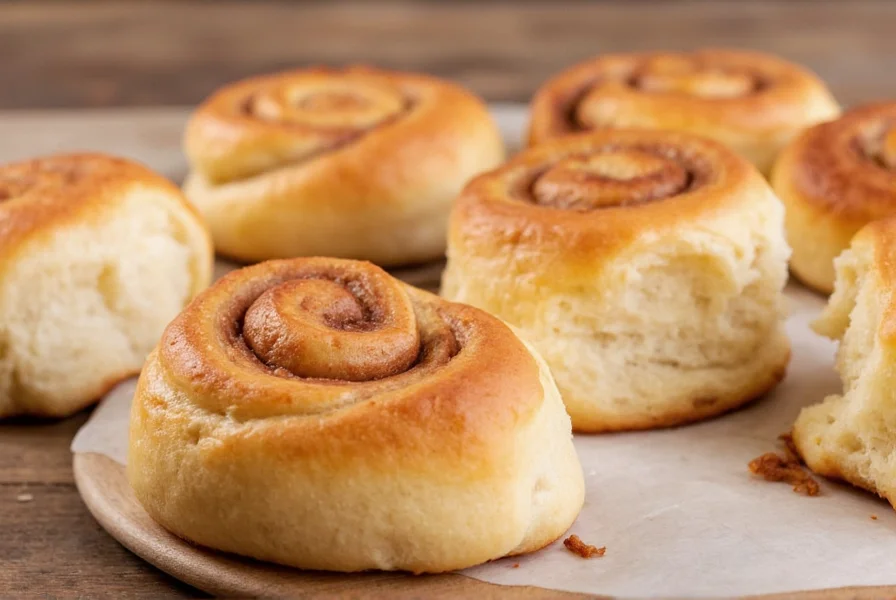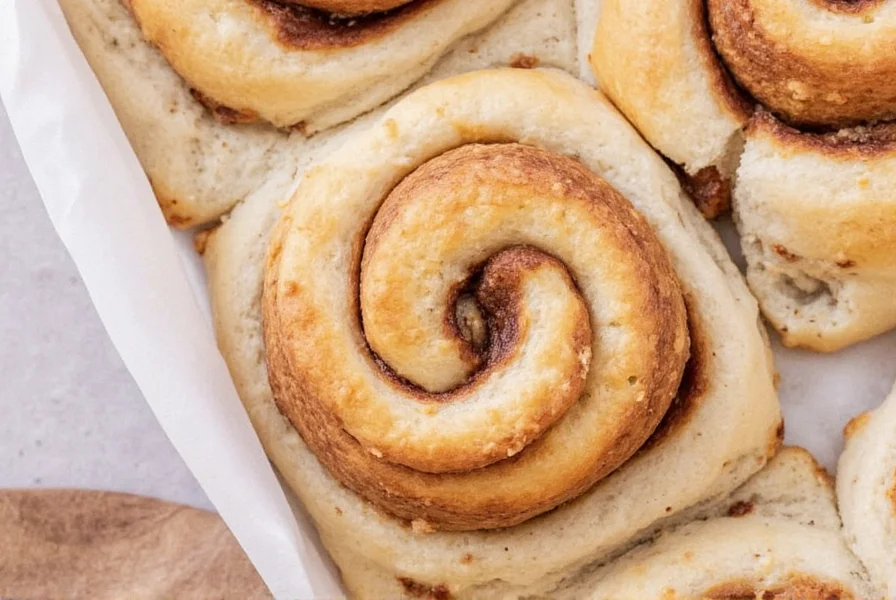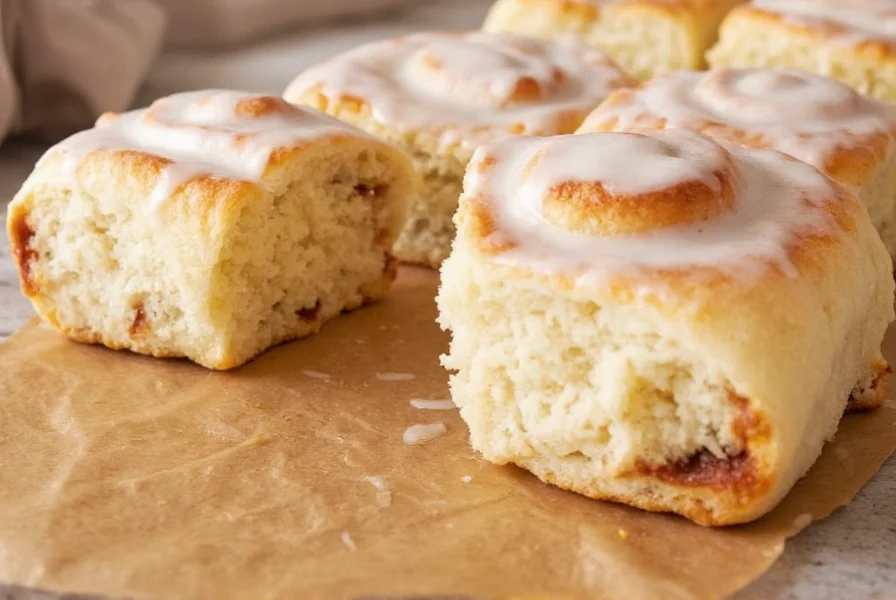Nothing compares to the warm, comforting aroma of freshly baked cinnamon rolls filling your kitchen. For busy home bakers, frozen cinnamon rolls offer a convenient solution that delivers surprisingly delicious results when prepared correctly. Understanding the proper techniques transforms store-bought convenience into a homemade-quality treat that satisfies even discerning palates.
The Science Behind Frozen Cinnamon Rolls
Frozen cinnamon rolls work through a process called "retarding," where yeast activity slows dramatically at freezing temperatures. This preservation method maintains dough integrity while allowing convenient storage. When properly thawed and baked, the yeast reactivates, producing that signature rise and airy texture.
Most commercial frozen cinnamon rolls contain dough conditioners and preservatives that maintain quality during freezing. Higher-quality brands use minimal additives, resulting in better flavor development during baking. Understanding these components helps you select products that deliver superior results.

Step-by-Step Baking Instructions
Follow these professional techniques for consistently perfect cinnamon rolls:
- Thawing options: For best results, thaw rolls at room temperature for 30-45 minutes. Alternatively, place in refrigerator overnight for slower, more controlled rising that enhances flavor development.
- Preparation: Line baking sheet with parchment paper and space rolls at least 2 inches apart to allow for proper expansion during baking.
- Baking parameters: Preheat oven to 350°F (175°C). Bake for 18-25 minutes until golden brown. Internal temperature should reach 190°F (88°C) for fully cooked rolls.
- Glazing technique: Apply icing immediately after baking while rolls are still warm. This allows the glaze to melt perfectly into the crevices without sliding off.
Troubleshooting Common Issues
Even experienced bakers encounter challenges with frozen cinnamon rolls. Here's how to solve frequent problems:
| Issue | Probable Cause | Solution |
|---|---|---|
| Dense, heavy texture | Insufficient thawing time | Allow complete thawing at room temperature before baking |
| Burnt bottoms | Oven temperature too high | Reduce temperature by 25°F and extend baking time slightly |
| Undercooked centers | Rolled too tightly | Gently separate layers before final rise to ensure even cooking |
| Glaze sliding off | Applied when rolls too hot or too cold | Apply icing when rolls reach 140°F internal temperature |
Expert Tips for Elevated Results
Transform your frozen cinnamon rolls from good to exceptional with these professional techniques:
- Temperature control: Let rolls come completely to room temperature before baking. Cold dough straight from freezer creates uneven baking.
- Pan selection: Dark metal pans promote better browning than glass or ceramic. For extra-crisp bottoms, preheat your baking sheet.
- Flavor enhancement: Sprinkle additional cinnamon-sugar mixture between layers before final rise for intensified flavor.
- Moisture management: Cover rolls with foil during last 5 minutes of baking if tops brown too quickly while centers remain undercooked.

Brand Comparison Insights
Not all frozen cinnamon rolls deliver equal quality. Consider these factors when selecting products:
Higher-end brands typically use real butter instead of margarine, contain fewer preservatives, and feature more generous cinnamon filling. Store brands often sacrifice quality for price, resulting in less complex flavor profiles. Look for products listing "yeast" as an active ingredient rather than chemical leaveners for authentic flavor development.
When evaluating frozen cinnamon rolls baking time instructions, remember that oven calibration varies. Always use visual cues (golden brown color) and internal temperature rather than strictly following package times.
Creative Applications
Extend your frozen cinnamon roll repertoire beyond basic baking:
- Create cinnamon roll bread pudding by cubing day-old rolls and baking with custard mixture
- Transform into mini cinnamon roll muffins by cutting dough into smaller pieces
- Make savory versions by replacing cinnamon filling with garlic-herb butter
- Use as base for cinnamon roll pancakes by flattening and griddling
Frequently Asked Questions
Can I bake frozen cinnamon rolls without thawing first?
Yes, but results will be less optimal. Baking directly from frozen typically requires increasing baking time by 8-12 minutes and covering loosely with foil to prevent over-browning while centers cook through. Thawing produces superior texture and more even baking.
How do I prevent frozen cinnamon rolls from drying out?
Store unopened packages in freezer until ready to use. After baking, keep rolls in airtight container at room temperature for up to 2 days. For longer storage, freeze cooled rolls then thaw at room temperature before reheating gently in microwave (10-15 seconds) with damp paper towel.
Why do my frozen cinnamon rolls sometimes collapse after baking?
This usually occurs from over-proofing during thawing. Rolls should increase to about 1.5x their original size. Excessive rising creates unstable structure that collapses when exposed to oven heat. Monitor rolls closely during thawing phase and bake when they've doubled in size.
What's the ideal internal temperature for perfectly baked cinnamon rolls?
The ideal internal temperature for fully baked cinnamon rolls is 190°F (88°C). Use an instant-read thermometer inserted into the center of a roll to verify doneness. This ensures proper starch gelatinization and protein coagulation for optimal texture without overbaking.











 浙公网安备
33010002000092号
浙公网安备
33010002000092号 浙B2-20120091-4
浙B2-20120091-4